Bringing a dog into your life is one of the most exciting, joyful decisions you can make. Whether you’re planning to adopt a puppy or rescue an adult dog, your new role as a dog parent will change your world in the best possible way. But like any major life event, becoming a dog parent comes with its own challenges, responsibilities, and learning curves.
In this complete guide, we’ll walk you through everything new dog owners need to know—from choosing the right dog for your lifestyle to the best supplies, training essentials, and care tips. Whether you’re holding that leash for the first time or planning your very first trip to the pet store, this is where your journey begins.
Welcome to Dog Parenthood: What to Expect
Why Getting a Dog Is Life-Changing
Having a dog isn’t just about adding a pet to your home—it’s about welcoming a companion, best friend, and family member into your life. Dogs don’t just fill your days with wagging tails and sloppy kisses; they bring structure, purpose, and emotional fulfillment.
Benefits of dog parenting:
- Increased physical activity: Daily walks and playtime keep both of you healthy.
- Emotional support: Dogs provide unconditional love, emotional comfort, and even mental health benefits.
- Routine and responsibility: Dogs rely on you for everything—from food to play to bathroom breaks—creating structure in your daily life.
It’s no wonder studies show that dog owners tend to be happier, healthier, and more active. But make no mistake—it’s a serious commitment that deserves planning, patience, and preparation.
The First 30 Days: What New Dog Owners Need to Know
The first month with your new dog is critical. This is when your dog is adjusting to their new environment, learning routines, and figuring out what’s expected of them.
Key steps for the first month:
- Establish routines—feeding, potty breaks, playtime.
- Vet visit within the first 7 days for a health check.
- Start crate or confinement training immediately to prevent destructive behavior.
- Enroll in obedience or puppy classes if possible.
Don’t expect perfection in the first 30 days. There will be accidents, chewed shoes, and a lot of trial and error. But by sticking to a routine and focusing on positive reinforcement, you’ll build the foundation for a well-adjusted, happy pup.
Choosing the Right Dog for Your Lifestyle
Best Dog Breeds for First-Time Owners
Not every dog breed is the perfect match for first-time dog owners. Some breeds require intense grooming or have high training demands. As a beginner, you’ll want a dog that’s known for being adaptable, trainable, and friendly.
Top picks for first-time dog parents:
- Labrador Retriever: Friendly, smart, and great with kids.
- Golden Retriever: Loyal, gentle, and highly trainable.
- Beagle: Energetic, affectionate, and smaller in size.
- Cavalier King Charles Spaniel: Perfect for apartment living, with a sweet temperament.
- Poodle (or Doodle mixes): Hypoallergenic coat and excellent intelligence.
Always consider your energy level, available space, work schedule, and long-term commitment when choosing a breed. And remember—mixed breeds often make fantastic pets, too!
Should You Adopt or Shop? Pros and Cons
It’s one of the first big decisions: should you adopt a dog from a shelter or buy from a breeder? Both have pros and cons, depending on your goals, lifestyle, and personal values.
Adoption Pros:
- Gives a homeless dog a loving home.
- Often more affordable with vaccines/spaying included.
- Many adult dogs are already house-trained.
Breeder Pros:
- Predictable lineage for health and temperament.
- Early exposure to training and socialization.
- Greater control over breed characteristics.
Key takeaway:
If you go the breeder route, choose a reputable, ethical breeder who provides health clearances. If you adopt, research local shelters or rescue groups, and don’t overlook adult dogs—they often make the best companions for first-time owners.
Preparing Your Home for a New Dog
Dog-Proofing Essentials Every Owner Needs
Before bringing your dog home, take a moment to look at your house from a dog’s perspective. Anything chewable, swallowable, or breakable needs to be removed, secured, or elevated.
Dog-proofing checklist:
- Secure trash cans—dogs LOVE exploring garbage.
- Hide electrical cords behind furniture or use cord protectors.
- Store shoes, bags, and children’s toys out of reach.
- Install baby gates to block off off-limit rooms or stairs.
- Remove toxic plants such as lilies, aloe vera, or philodendrons.
Just like baby-proofing a house, dog-proofing is about preventing accidents before they happen. It might feel excessive at first, but you’ll thank yourself when your new furry tornado doesn’t rip apart your favorite shoes.
Setting Up the Perfect Dog Space in Your Home
Your dog needs a safe space they can call their own, especially during the adjustment period.
What to include in their personal space:
- A cozy dog bed for naps and quiet time.
- Crate or pen for confinement training.
- Water bowl that’s always accessible.
- Favorite toys for comfort and entertainment.
The key to helping your dog feel at home is consistency. Always lead them to the same area when it’s time to nap, eat, or relax. Dogs are creatures of habit, and a predictable environment creates security and confidence.
Essential Supplies for New Dog Owners
Top-rated Dog Beds for Small to Large Breeds
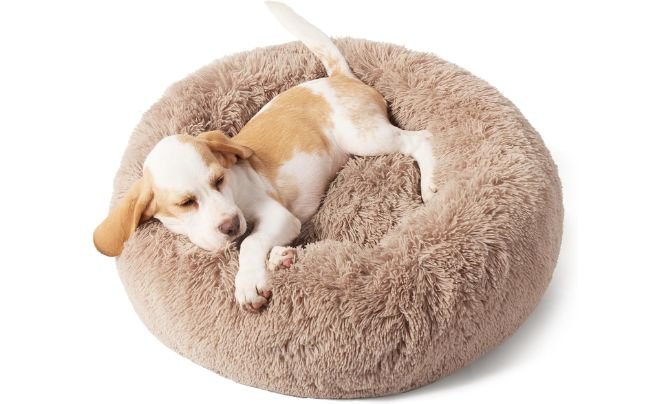
A comfortable bed isn’t just a luxury for your dog—it’s a necessity. Dogs need a dedicated space to relax, recharge, and feel safe. But with so many beds on the market, how do you know which one to choose?
What to look for in a dog bed:
- Size-appropriate: Your dog should be able to stretch out comfortably.
- Orthopedic support: Especially important for large breeds or senior dogs.
- Washable cover: Accidents, drool, and fur buildup make cleaning essential.
- Non-slip bottom: To prevent the bed from sliding on hardwood or tile floors.
Top-rated picks by size:
- Small Breeds: Best Friends by Sheri Calming Donut Bed.
- Medium Breeds: Furhaven Orthopedic Sofa Dog Bed.
- Large Breeds: PetFusion Ultimate Dog Bed with Memory Foam.
Dogs love having their own cozy spot, and a high-quality dog bed helps them feel secure, reduces joint pain, and even improves sleep quality. Investing in a proper bed is one of the smartest purchases you’ll make as a new dog parent.
Best Collars, Harnesses, and Leashes for Comfort and Control
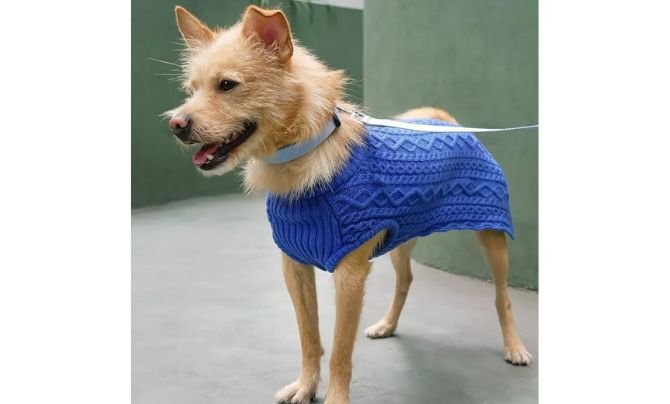
Going for walks isn’t just about potty breaks—it’s a chance for exercise, mental stimulation, and bonding. The right collar, harness, and leash setup ensures safety for both you and your dog.
Collar vs. Harness:
- Collar: Great for ID tags and dogs that don’t pull.
- Harness: Offers more control, distributes pressure evenly across the chest, and is recommended for puppies or pullers.
Features of a great harness:
- Adjustable straps for a perfect fit.
- Padded chest plate for comfort during long walks.
- Front-clip option to discourage pulling behavior.
Top-rated products:
- Collar: Blueberry Pet Classic Solid Color Collar.
- Harness: Rabbitgoo No-Pull Adjustable Dog Harness.
- Leash: Ruffwear Roamer Bungee Leash for energetic walkers.
A comfortable, well-fitted harness and leash setup will make walks enjoyable for both of you—and start building that all-important communication between you and your new pup.
Feeding Your New Dog: The Basics
Best Dog Food for Puppies and Adults

One of the first (and most important) decisions you’ll make as a new dog parent is choosing the right dog food. Nutrition is the foundation of your dog’s overall health, energy, coat condition, and even behavior.
Choosing the right formula:
- Puppies: Need higher protein and fat to support growth.
- Adults: Balanced formulas with controlled calories to maintain weight.
- Large breeds: Require joint support ingredients like glucosamine.
- Small breeds: Prefer smaller kibble pieces with calorie density.
Top-rated dog foods for puppies:
- Royal Canin Puppy Dry Dog Food: Breed-specific options available.
- Wellness Complete Health Puppy: With DHA for brain development.
Best dog food for adult dogs:
Talk to your vet about any special dietary needs based on breed, size, and activity level. Feeding the right food will set your dog up for a long, healthy life.
Treats and Chews: What’s Safe and Healthy?
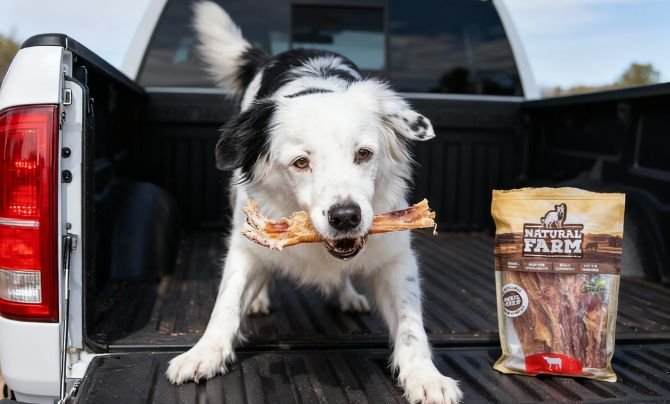
Treats are one of the most effective training tools, but not all treats are created equal. New dog parents often make the mistake of over-treating, leading to weight gain and poor nutrition.
Healthy treat options:
- Soft training treats for quick rewards.
- Dental chews to help with tartar buildup.
- Single-ingredient treats like dehydrated liver for sensitive stomachs.
Safe, top-rated choices:
- Zuke’s Mini Naturals Training Treats.
- Greenies Dental Chews.
- Rocco & Roxie Gourmet Jerky Dog Treats.
Moderation is key. Treats should make up no more than 10% of your dog’s daily calorie intake. By using nutrient-rich treats, you’re keeping your pup happy—and healthy at the same time.
Training Essentials for New Dog Parents
Crate Training 101: Creating a Safe Space

Think of a crate as your dog’s bedroom—a place they can go to relax, sleep, and feel secure. Crate training is especially valuable for puppies but can benefit dogs of all ages.
Benefits of crate training:
- Helps with potty training by teaching bladder control.
- Prevents destructive behavior when unsupervised.
- Reduces anxiety by providing a familiar environment during stressful situations.
How to do it right:
- Never use the crate as punishment. It should always be associated with positive experiences.
- Start with short intervals and build up.
- Feed meals in the crate to create positive associations.
- Use blankets and toys to make it comfortable.
Top-rated crates for new dog owners:
Done properly, crate training prepares your dog for stress-free vet visits, safe travel, and peaceful nights at home.
Positive Reinforcement Techniques for Fast Learning
Dogs don’t learn by punishment—they learn by reward. Positive reinforcement training means rewarding the behavior you want with treats, praise, or toys.
Key principles of positive reinforcement:
- Mark the desired behavior (using a clicker or word like “Yes!”).
- Reward immediately so the dog associates the reward with the behavior.
- Be consistent—everyone in the household should use the same commands.
Best products for training:
- PetSafe Clik-R Training Clicker.
- Treat pouches for convenient reward access.
Training doesn’t have to be long or formal to be effective. Five minutes of focused training each day builds confidence, strengthens your bond, and lays the foundation for future skills.
Grooming Your Dog the Right Way
Best Brushes for Short, Medium, and Long-Haired Breeds
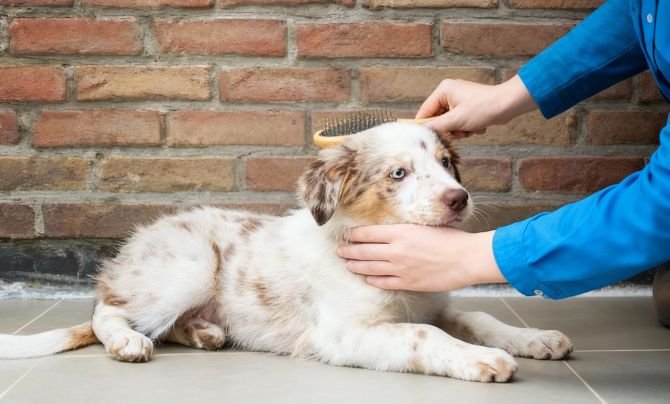
No matter what type of coat your new dog has, grooming is an essential part of dog care—not just to keep them looking good, but to promote healthy skin and reduce shedding. Using the best brush for your dog’s coat type makes a big difference in both effectiveness and your dog’s comfort.
Types of coats and brushes:
- Short-haired breeds (e.g., Beagle, Boxer): Rubber curry brushes or grooming mitts remove loose hair and stimulate healthy oils.
- Medium-haired breeds (e.g., Corgi, Border Collie): Slicker brushes help detangle fur and reduce undercoat shedding.
- Long-haired breeds (e.g., Golden Retriever): Pin brushes combined with undercoat rakes prevent matting and tackle seasonal shedding.
Top-rated brushes:
- FURminator Undercoat Deshedding Tool: One of the most popular for reducing shedding.
- Hertzko Self Cleaning Slicker Brush: Great for regular grooming, especially in medium-coated breeds.
- H HANDSON Grooming Gloves: Excellent for sensitive dogs who dislike traditional brushes.
Regular grooming not only keeps your dog’s coat clean and soft but also strengthens your bond and helps you monitor for bumps, fleas, or skin issues early on.
Grooming routine for beginners:
- Short-haired dogs: Weekly brushing.
- Medium-haired dogs: 2–3 times per week.
- Long-haired dogs: Daily brushing recommended.
Start slow, use gentle strokes, and make grooming a positive, rewarding experience for your dog.
Bath Time Basics: Tools and Products You’ll Need
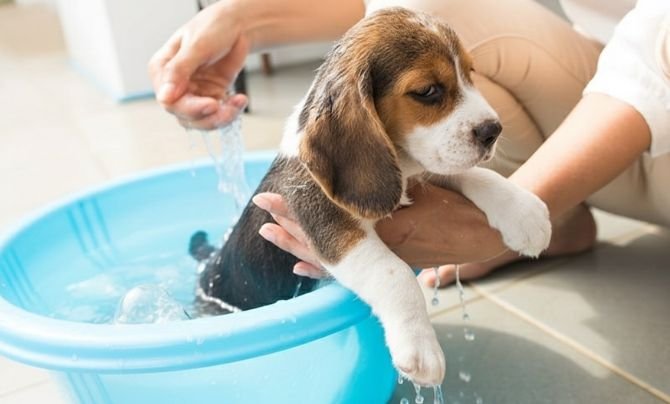
Bathing is another essential part of your dog’s grooming routine, but overdoing it can strip natural oils and irritate the skin. Finding the right balance—and the right products—makes all the difference.
How often should you bathe your dog?
- Short-haired dogs: Every 2–3 months or when dirty.
- Medium to long-haired dogs: Every 4–6 weeks.
- Double-coated breeds: As needed, with attention to drying thoroughly.
Bath time essentials:
- Dog-specific shampoo: Avoid using human shampoo, which can irritate canine skin.
- Detangling spray or conditioner for long-haired breeds.
- Absorbent towels or a pet-safe dryer for thick coats.
- Ear-cleaning solution to prevent infections, especially in floppy-eared breeds.
Top-rated products:
- Earthbath Oatmeal & Aloe Shampoo: Gentle and ideal for sensitive skin.
- Burt’s Bees for Dogs 2-in-1 Shampoo & Conditioner: Budget-friendly and great for puppies.
- Vet’s Best Ear Relief Wash: For routine ear care after baths or swimming.
By creating a calm, gentle bath routine, you’ll keep your dog healthy, smelling fresh, and ready for snuggles.
Related Articles
Keeping Your Dog Healthy
Regular Vet Visits: Why They Matter
Your dog’s veterinarian is your best partner in ensuring lifelong health and happiness. Even if your dog appears perfectly healthy, routine vet checkups catch potential issues early and help build a comprehensive health history.
Key vet visit topics:
- Vaccinations: Core vaccines like rabies, distemper, and parvovirus.
- Parasite prevention: Heartworm, flea, and tick treatments.
- Dental exams: Oral health is often overlooked but essential.
- Nutritional advice: Vets can help you fine-tune your dog’s diet based on breed, size, and activity level.
Puppies require more frequent visits during their first year for vaccinations and growth checkups. Adult dogs typically visit once a year, with olders visiting every 6 months.
Regular checkups keep small problems from becoming big ones, ensuring your dog stays healthy and happy long-term.
Vaccinations, Flea, and Tick Prevention Tips
Keeping your dog healthy isn’t just about good food and exercise—it’s also about protecting them from common diseases and parasites.
Essential vaccinations:
- Rabies: Required by law in most regions.
- Distemper, Parvovirus, Hepatitis: Usually given as a combination vaccine (DHPP).
- Bordetella (Kennel Cough): Recommended if your dog will visit dog parks, boarding facilities, or grooming salons.
Parasite prevention:
- Fleas and ticks: Monthly treatments like Frontline or K9 Advantix II.
- Heartworms: Preventative medications like Heartgard are essential, especially in warmer climates.
Always discuss your dog’s vaccination schedule and parasite prevention with your veterinarian. It’s one of the simplest but most important ways to protect your furry family member.
Socialization and Behavior Tips
Introducing Your Dog to New People and Pets

Proper socialization is the key to raising a confident, friendly dog. The earlier you expose your dog to new people, environments, and other pets, the easier it will be for them to handle life’s surprises.
Socialization tips for new dog parents:
- Start slow—short introductions with calm, friendly dogs first.
- Reward positive behavior during new experiences with treats or toys.
- Introduce new sights and sounds gradually, like traffic, bicycles, or children playing.
- Attend puppy socialization classes for structured, guided exposure.
Positive early experiences help prevent aggression, fearfulness, and anxiety later in life.
Managing Separation Anxiety in Dogs
Many new dog parents experience the heartbreak of coming home to chewed shoes, scratched doors, or a whining dog—classic signs of separation anxiety.
Steps to ease separation anxiety:
- Practice short absences first and gradually increase the time away.
- Leave interactive toys or treat puzzles to keep them occupied.
- Avoid dramatic entrances or exits to reduce anxiety triggers.
- Consider crate training to create a safe, cozy retreat when you leave.
If anxiety becomes severe, consult with a veterinarian or certified dog trainer for professional guidance. With patience and consistency, most dogs learn to relax alone over time.
Exercise and Play for a Happy Dog
Best Toys for Mental and Physical Stimulation

Playtime isn’t just fun for your dog—it’s essential for their mental and physical health. The right toys help curb boredom, prevent destructive behavior, and strengthen your bond with your furry friend.
Best types of toys for new dog owners:
- Chew toys: Help with teething puppies and satisfy chewing instincts.
- Interactive puzzle toys: Challenge your dog’s mind by hiding treats they have to work for.
- Fetch toys: Perfect for energetic breeds who need to burn off steam.
- Tug toys: Great for building strength and interactive play with you.
Top-rated products:
- KONG Classic Dog Toy: Fill it with peanut butter or treats for long-lasting fun.
- Outward Hound Hide-A-Squirrel Puzzle Toy: Engages your dog’s brain while they “hunt” the squeaky toys.
- Chuckit! Ultra Ball: Super durable for intense games of fetch.
Rotate toys weekly to keep things fresh, and always supervise play with new toys to ensure safety.
How Much Exercise Does Your Dog Need?
Different breeds and sizes have varying exercise needs, but every dog benefits from regular activity. It’s about more than burning calories—exercise keeps your dog’s mind sharp and behavior balanced.
Exercise recommendations by dog type:
- Small breeds (e.g., Dachshunds, Chihuahuas): 30–45 minutes per day.
- Medium breeds (e.g., Beagles, Cocker Spaniels): 1 hour or more.
- Large breeds (e.g., Labs, Shepherds): 1.5 to 2 hours, ideally split into two sessions.
Types of exercise can include:
- Walks
- Fetch in the yard
- Swimming
- Hiking
- Dog park visits
Lack of proper exercise is one of the top causes of behavioral problems in dogs, so making activity part of your routine will lead to a happier, calmer companion at home.
Traveling With Your Dog
Best Travel Gear for Safe and Easy Trips
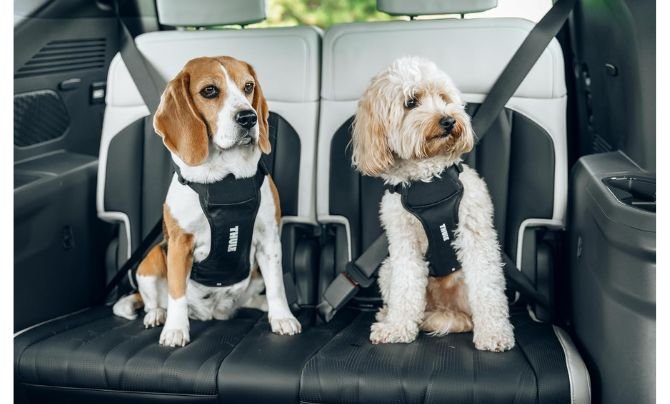
Whether it’s a weekend road trip or an extended vacation, bringing your dog along requires the right gear for safety and comfort.
Must-have travel products for dogs:
- Travel crates or harness seat belts for secure car rides.
- Collapsible travel bowls for food and water on the go.
- Dog travel beds or mats for comfort during breaks or hotel stays.
- Portable water bottles for hydration on hikes or long walks.
Top-rated travel gear:
- Lucky Dog Uplander Kennel: Crash-tested for safety in cars.
- Kurgo Tru-Fit Dog Harness: Comfortable, adjustable, and designed for car safety.
- Lesotc Water Bottle: Portable water bottle with built-in bowl for easy hydration.
Bringing your dog along should be fun—not stressful. With proper preparation and the right products, travel with your furry friend can be safe, smooth, and memorable.
Preparing Your Dog for Road Trips and Flights
Don’t spring travel on your dog unprepared. Gradual acclimation is the secret to a relaxed, enjoyable trip.
Tips for successful travel with dogs:
- Take short practice drives before longer road trips.
- Let your dog explore their travel crate or harness before the journey.
- Bring familiar toys or blankets to reduce anxiety.
- Plan frequent stops for bathroom breaks and leg stretches.
- Check airline policies in advance if flying with your pet.
Your dog will enjoy the adventure much more if they’re properly trained and prepared for the experience.
Common Mistakes New Dog Owners Make
Avoiding Overfeeding and Undertraining
Two of the most common mistakes new dog owners make are feeding too much and neglecting consistent training. Both can lead to frustrating behavior problems—and health issues.
Mistakes to watch for:
- “Free-feeding” (leaving food out all day): Leads to weight gain.
- Using food as entertainment rather than reward for good behavior.
- Skipping regular training sessions: Inconsistent rules confuse your dog.
- Over-treating or not using healthy treats.
With clear boundaries, regular exercise, and careful portion control, you’ll prevent these common missteps and set your dog up for success.
Being Patient During the Adjustment Period
Bringing a dog home is a major adjustment—not just for you, but for your dog, too. They need time to learn your routines, trust your leadership, and settle into their new environment.
Things to remember:
- Expect accidents, mistakes, and trial-and-error in the first few months.
- Be consistent—dogs thrive on predictable routines.
- Celebrate progress, no matter how small.
The most important thing? Patience. Your dog will sense your emotions, and a calm, patient owner will help foster trust and loyalty in your new companion.
The Rewards of Being a Dog Parent
Emotional Benefits of Dog Ownership
It’s no secret that dogs bring an incredible amount of joy into our lives, but they also offer profound emotional and physical benefits.
What you’ll gain:
- Lower stress levels and blood pressure (proven by science!).
- Constant companionship, even during tough times.
- An excuse to get outdoors, stay active, and meet other dog lovers.
- Unconditional love—the kind that makes even the worst days better.
Building a Lifelong Bond With Your Dog
Raising a dog isn’t just about food and toys—it’s about partnership, friendship, and loyalty. With time, training, and love, your dog will become your closest companion, adventure partner, and emotional anchor.
It’s not just a pet. It’s family.
Conclusion: Your Journey as a New Dog Parent Begins
Becoming a dog parent is one of life’s most fulfilling adventures. It’s messy, funny, exhausting—and worth every second. By preparing properly, investing in the right supplies, learning training basics, and practicing patience, you’ll build a relationship that lasts a lifetime.
Welcome to the best club on earth—the dog parent club. Your new best friend is waiting for you to start this beautiful journey together.
FAQs for New Dog Owners
How often should I feed my new dog?
Most adult dogs should eat twice a day, while puppies often need 3–4 smaller meals.
When should I start training my puppy?
Immediately! Even 8-week-old puppies can begin learning basic commands like “sit” and “come.”
Do I need pet insurance?
It’s a smart idea—especially for covering unexpected vet bills or emergencies. Compare policies before choosing.
What’s the best first trick to teach a new dog?
“Sit” is often the easiest and most useful starting point.
How long does it take for a new dog to adjust to a new home?
Every dog is different, but most settle within 2 to 4 weeks with a consistent routine.






